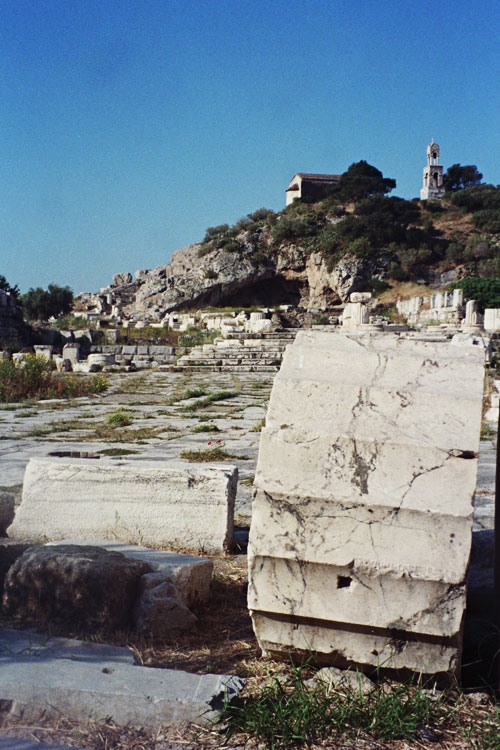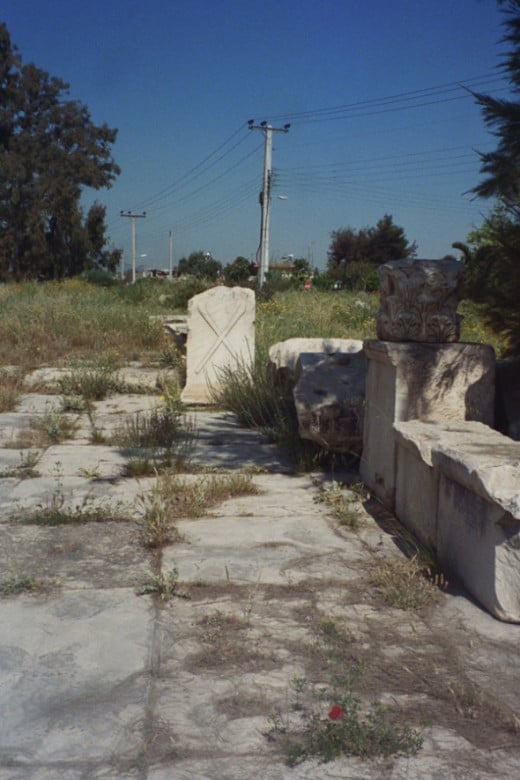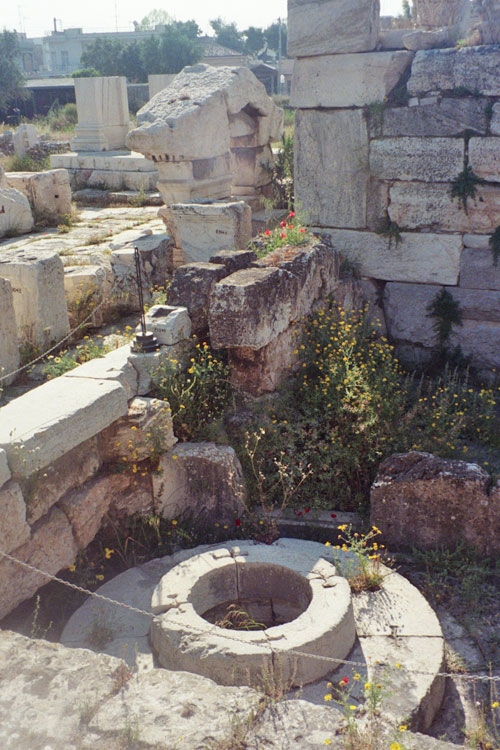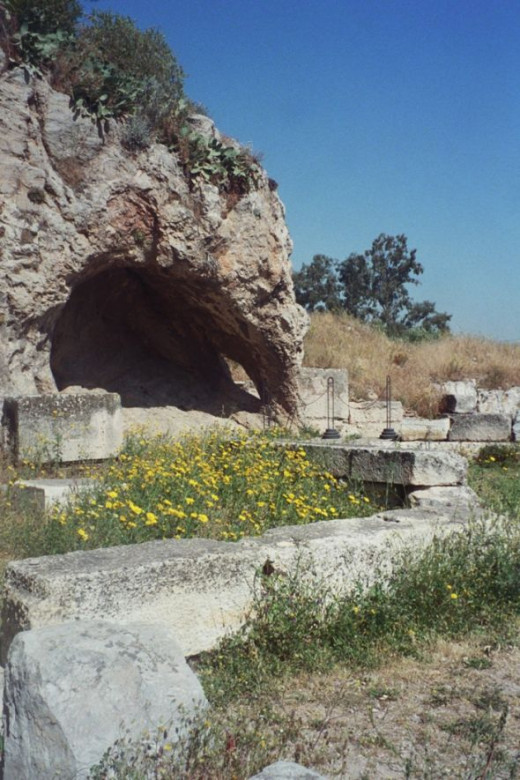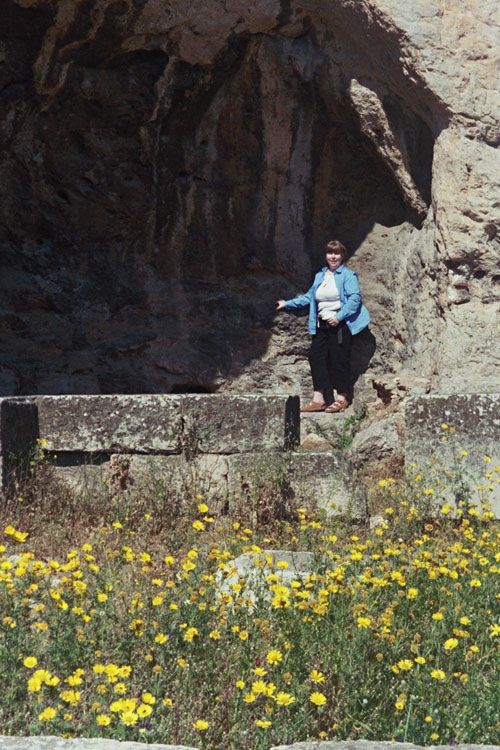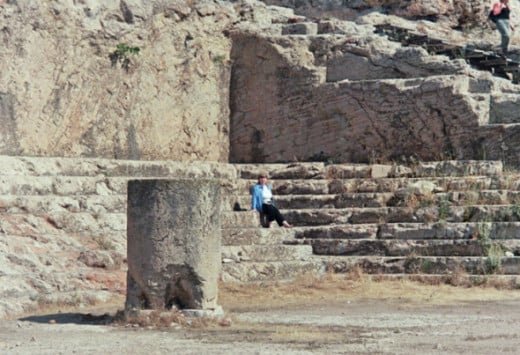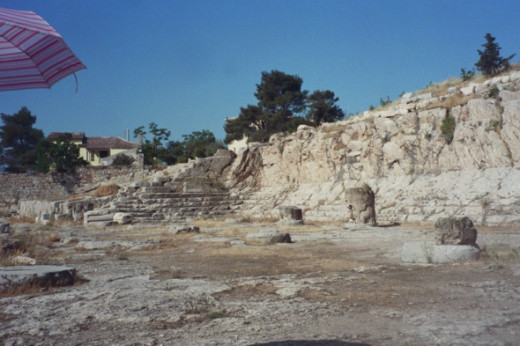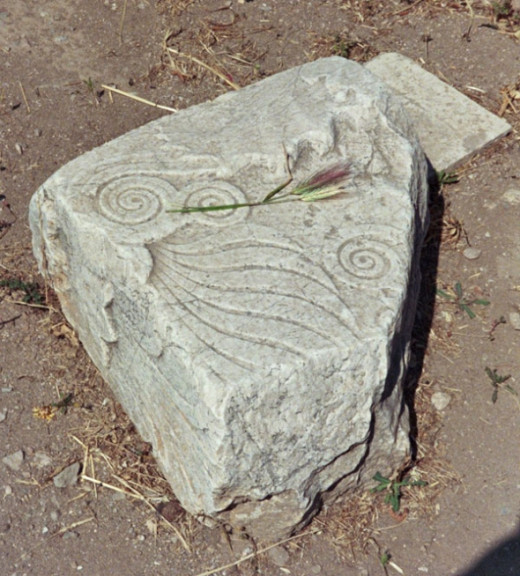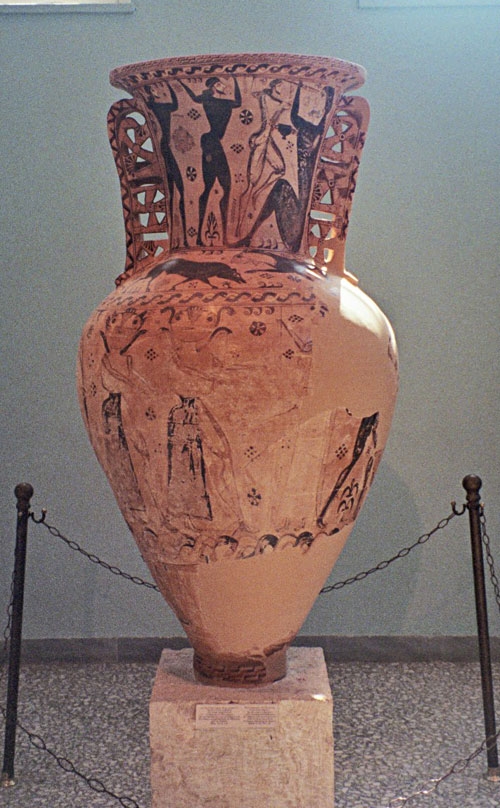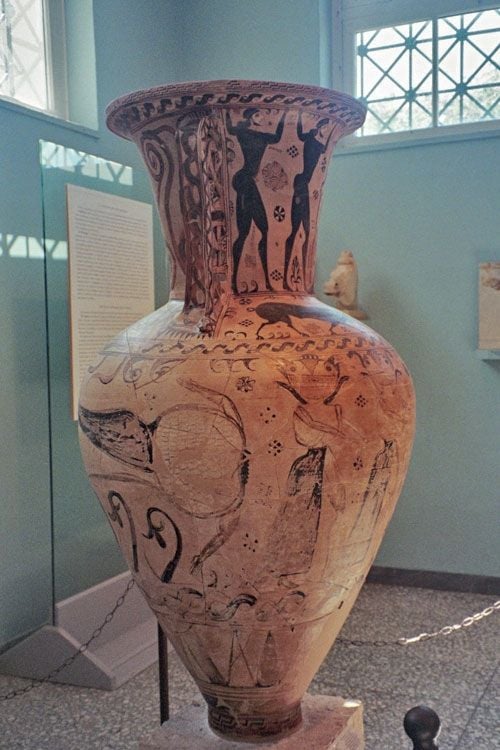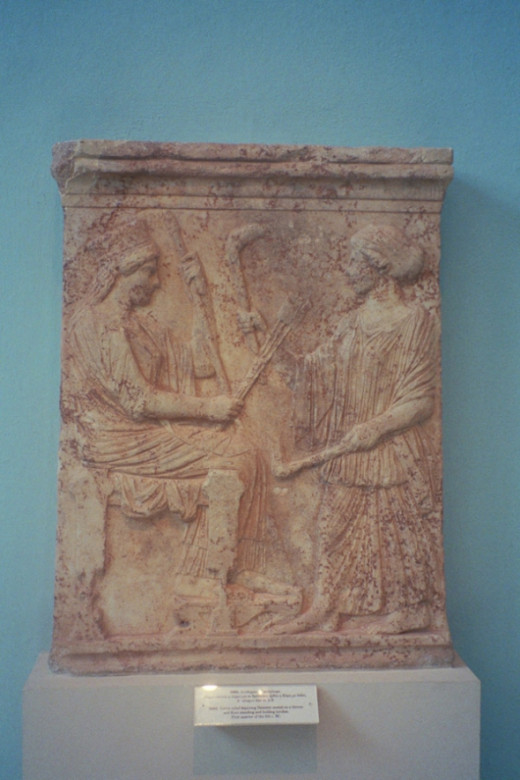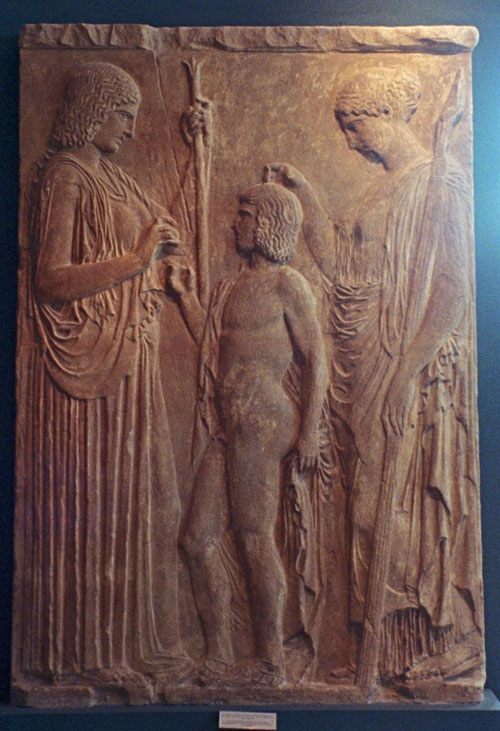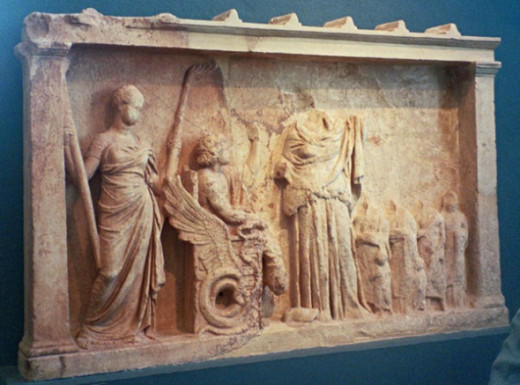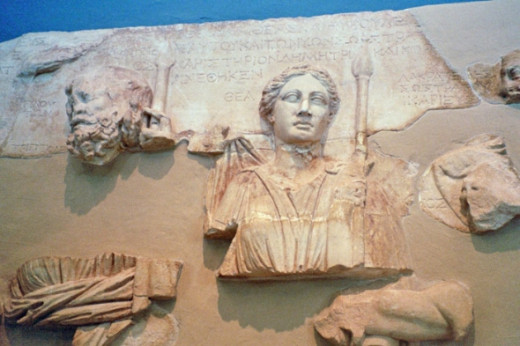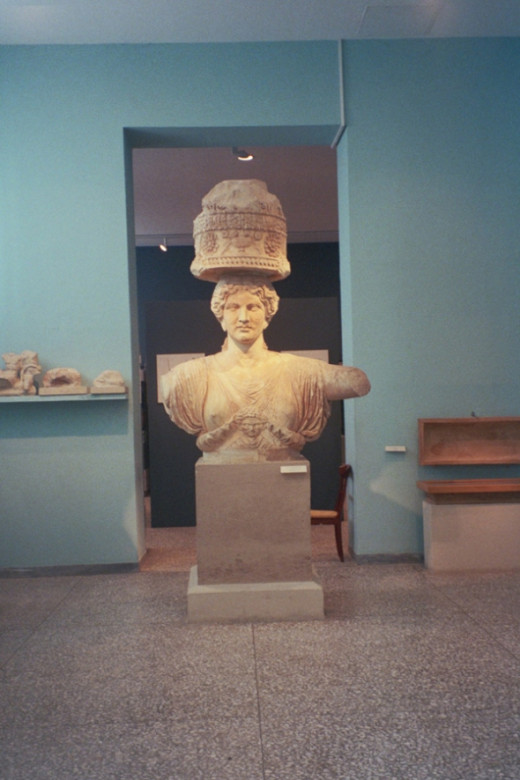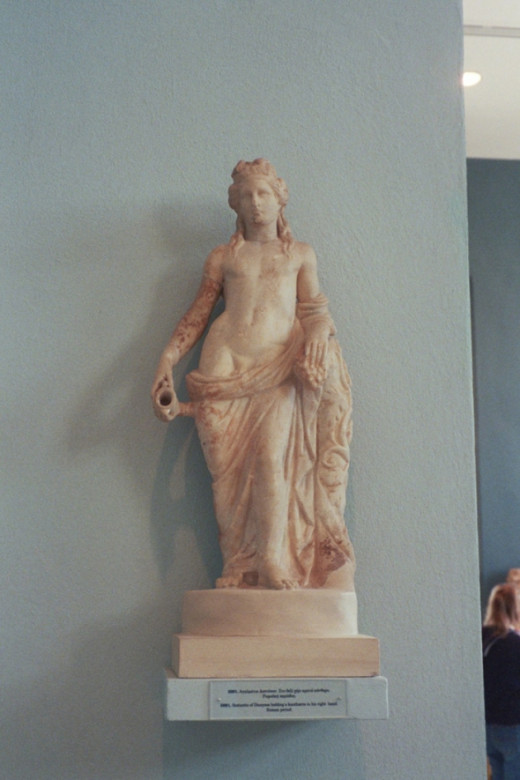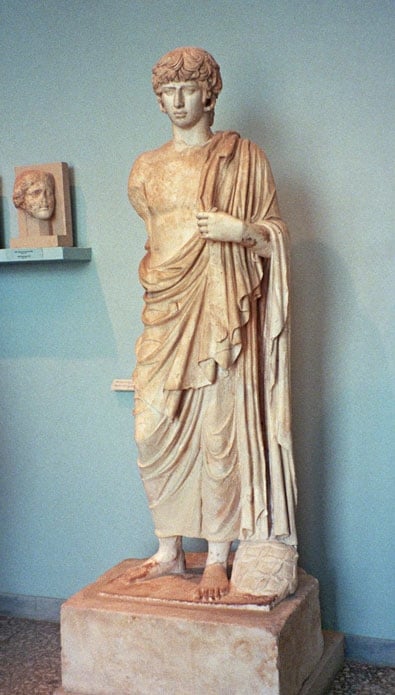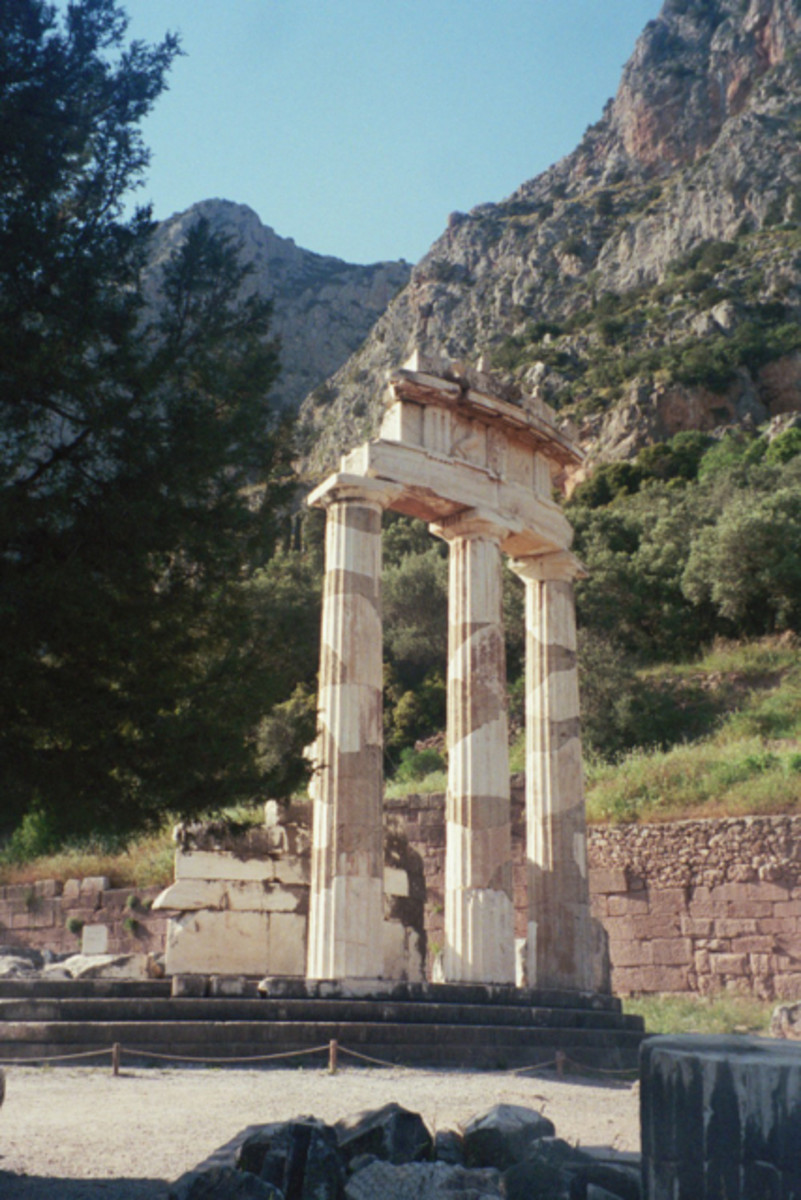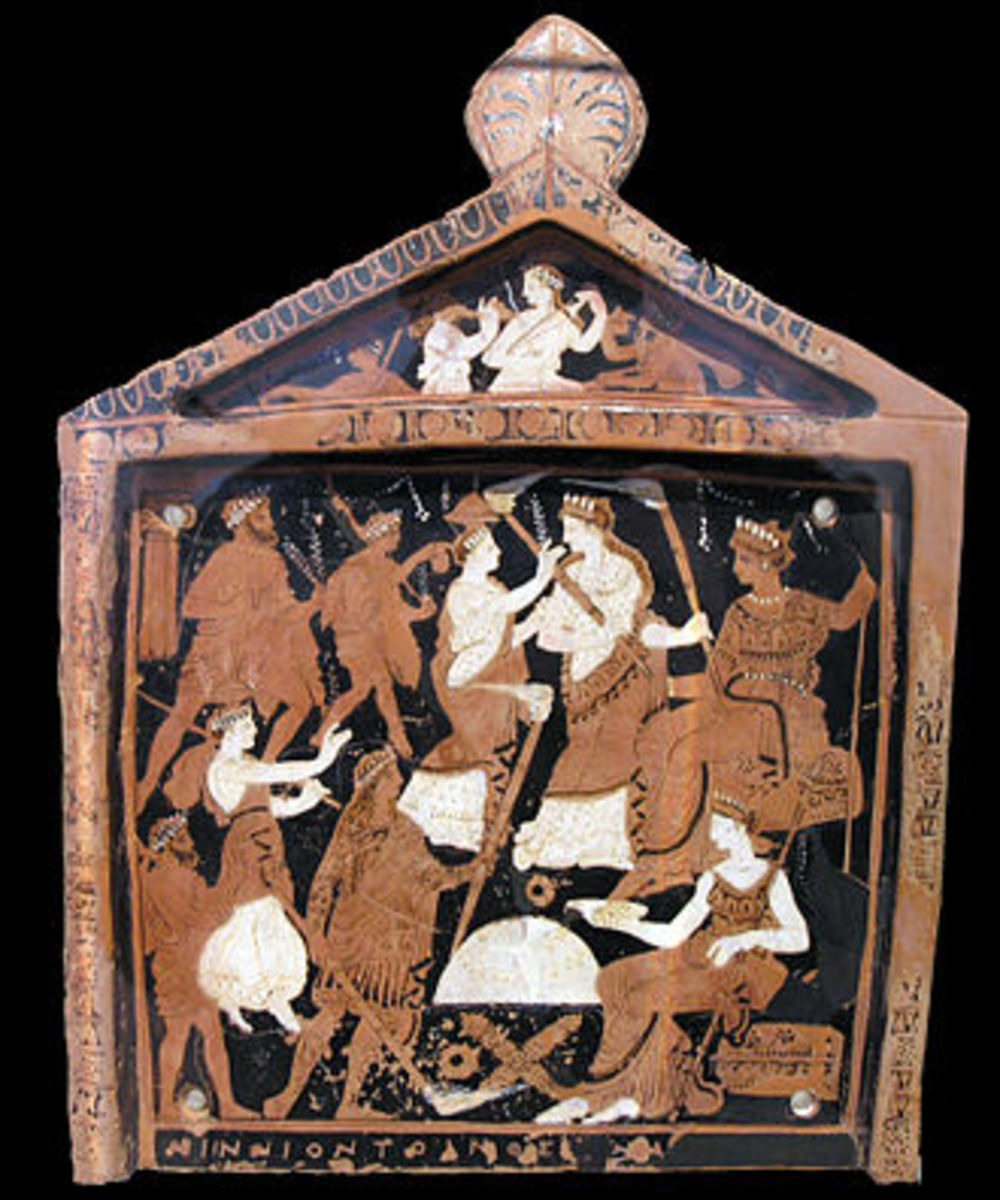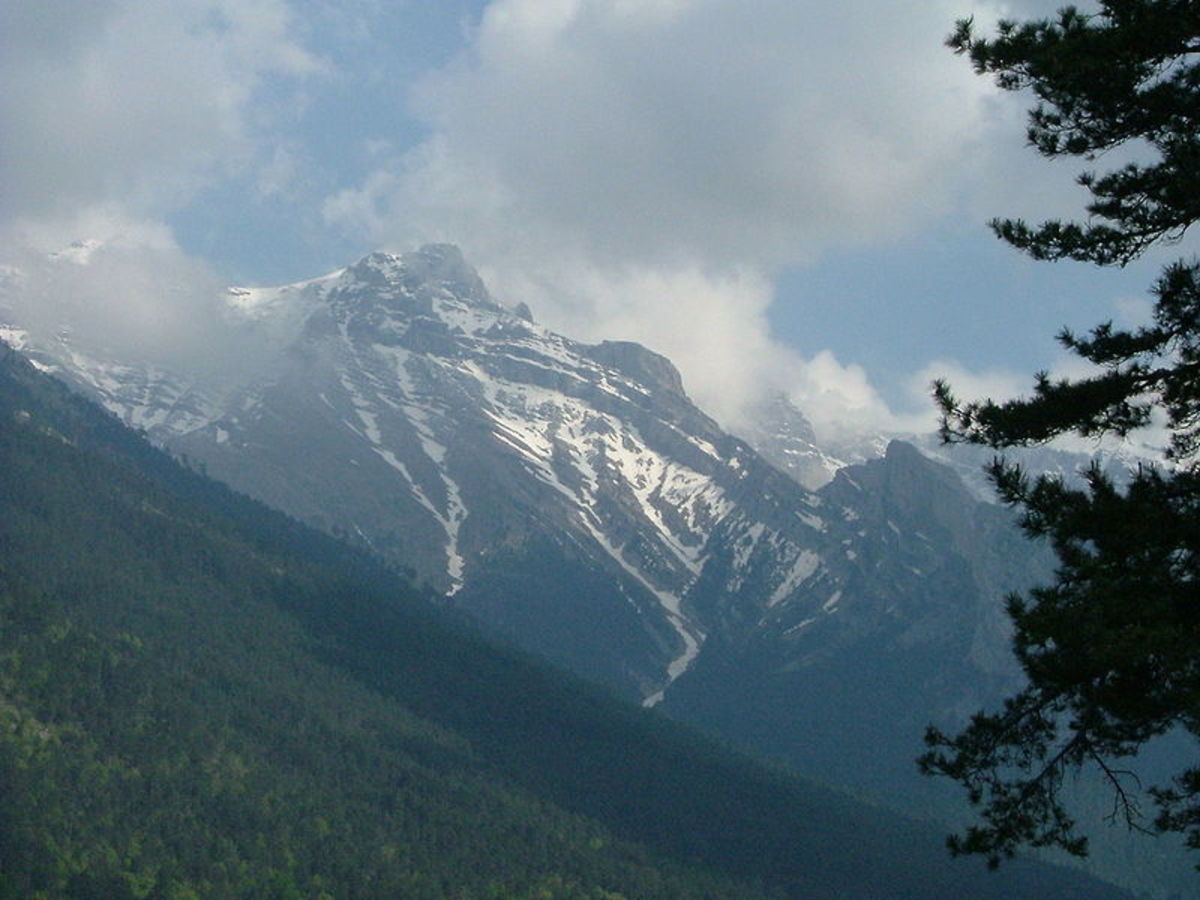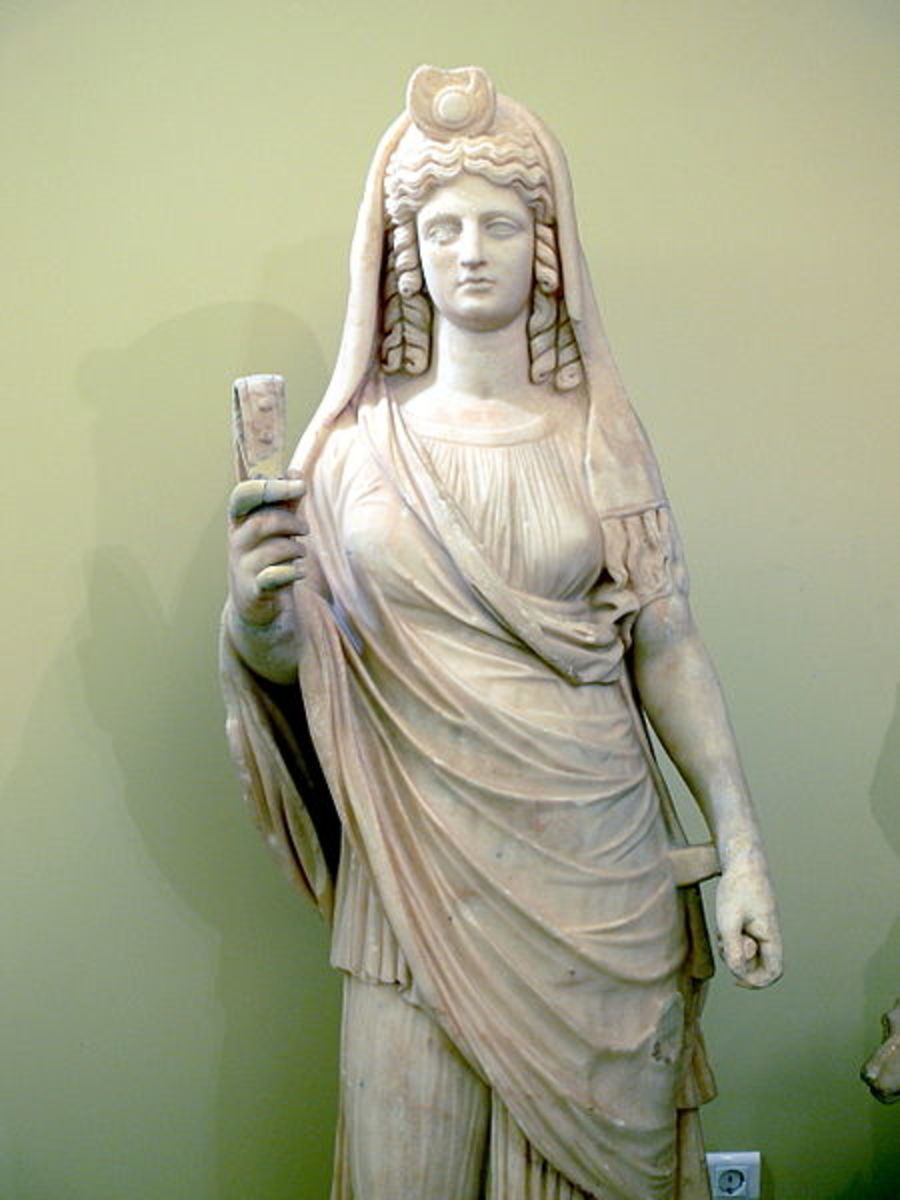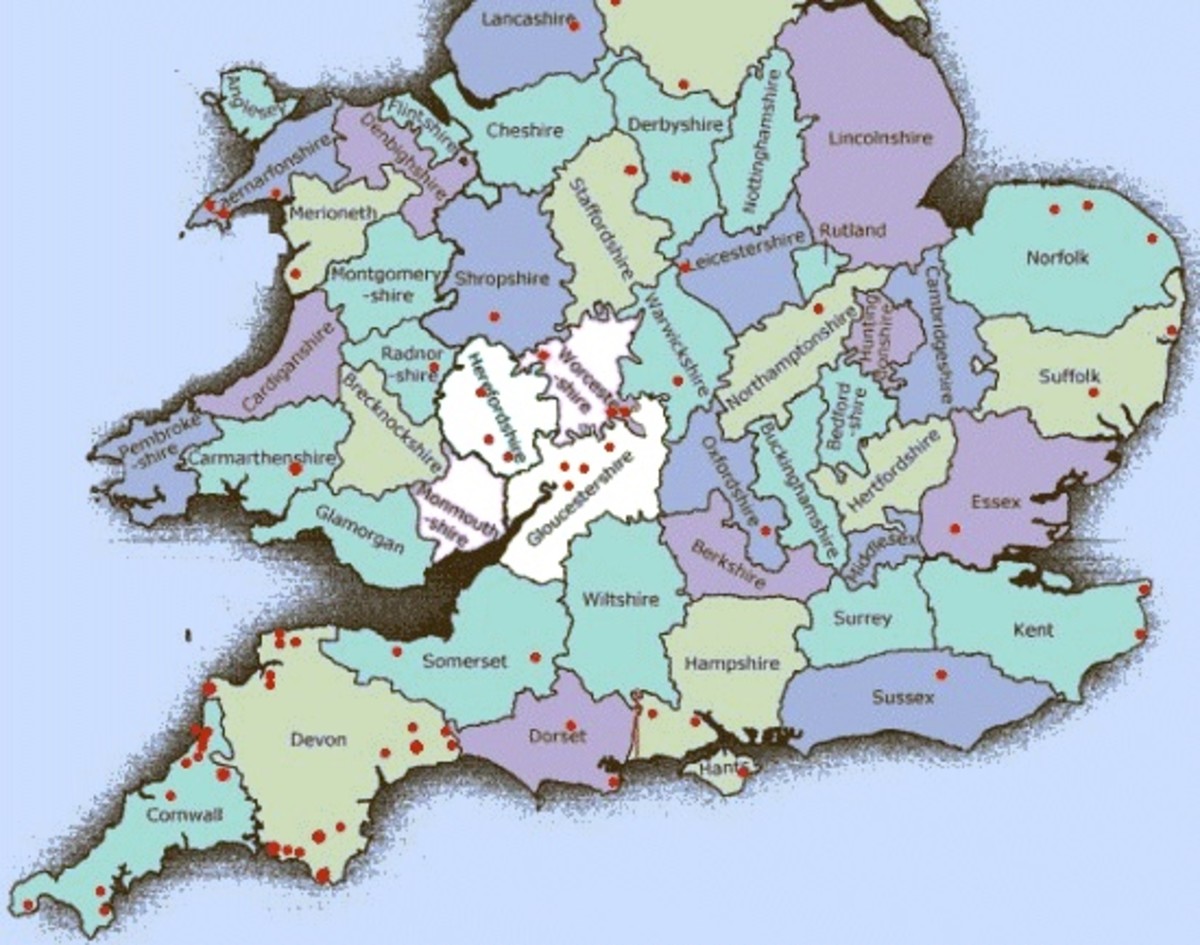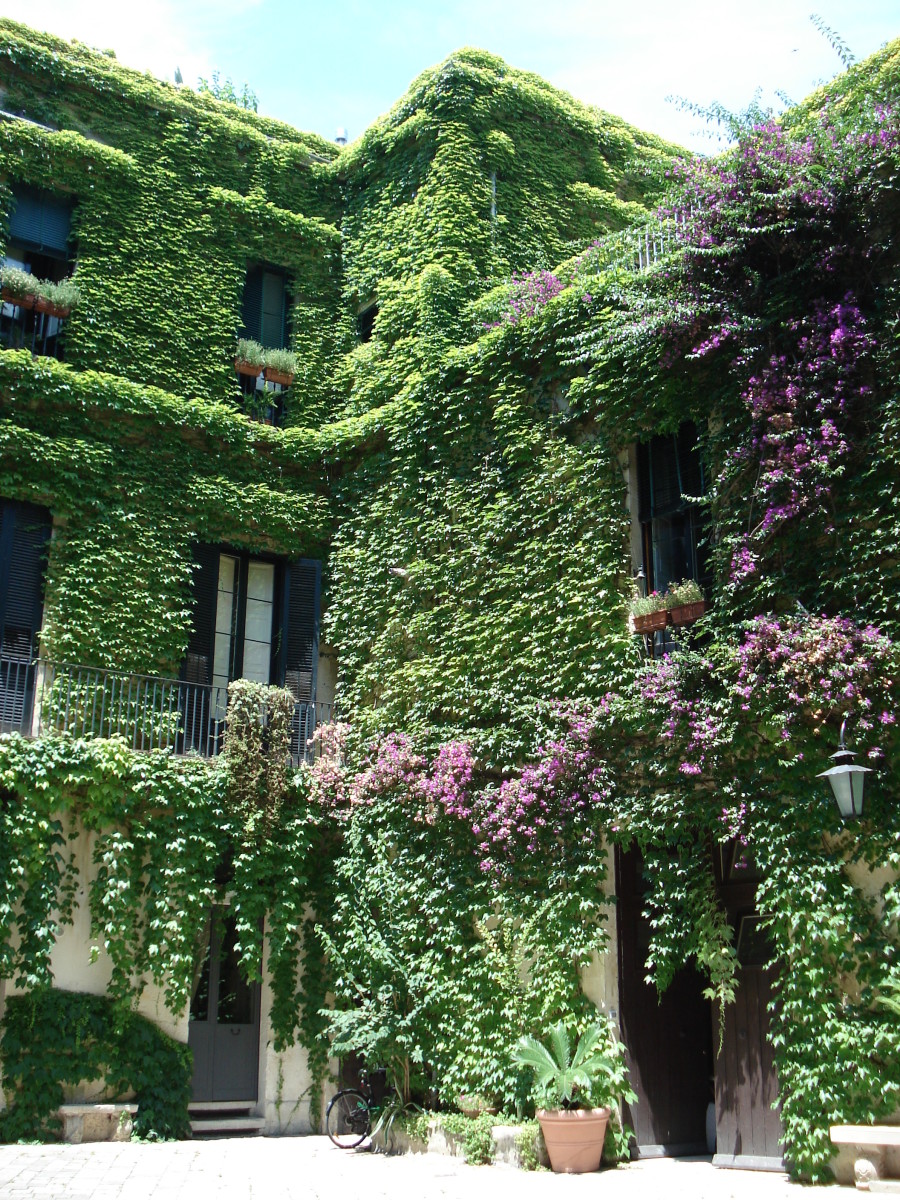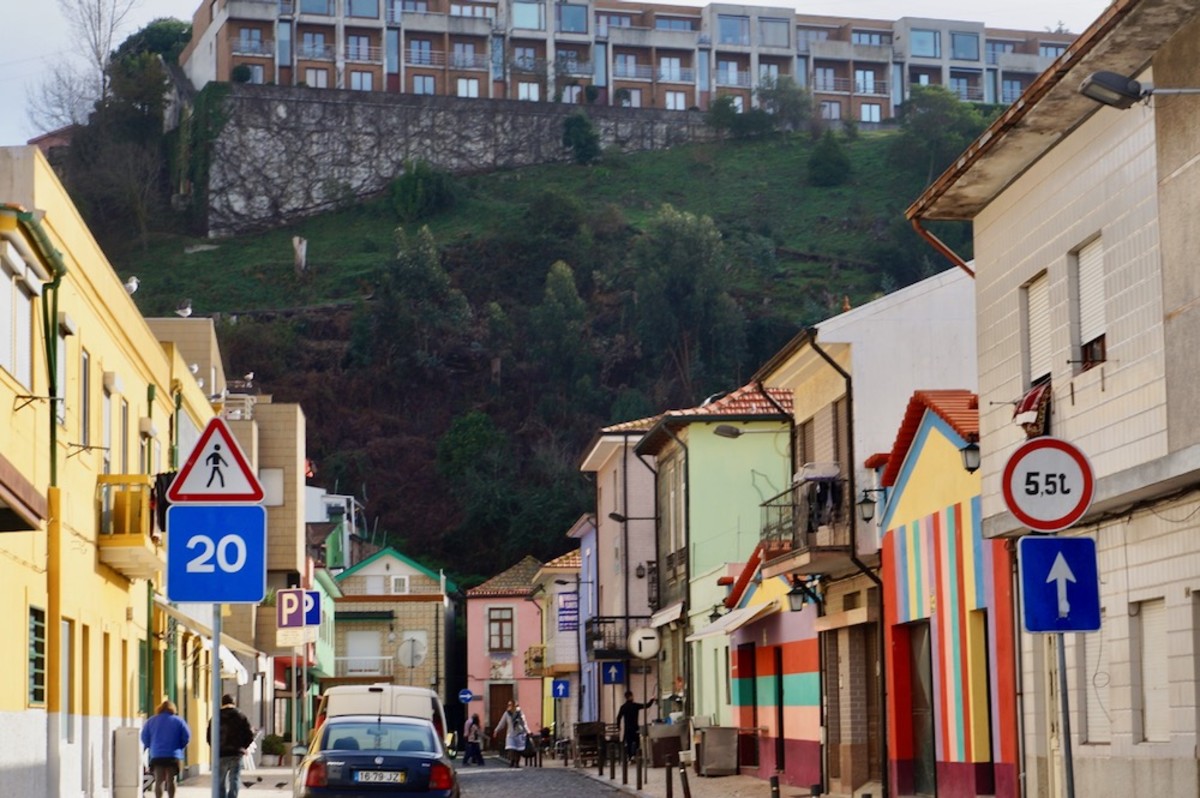Ancient Greece Odyssey: Eleusis and Demeter
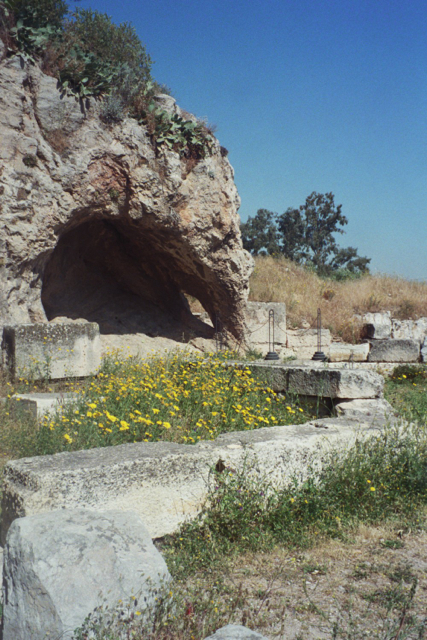
Ancient Greece Odyssey: Part Three
My odyssey through Greece turns next to the ancient site of Eleusis, sanctuary of the goddesses Demeter and Persephone. Before I share my photos and retrace my steps there, I would like to tell you an ancient myth about Eleusis. This story was one of the most moving tales to the ancient Greeks, a tale of a mother's search for her lost daughter.
If you've just stumbled across this Greek travelogue, you may want to return to the beginning of Ancient Greece Odyssey: a Traveler's Journal. Otherwise, read on to make a pilgrimage to Eleusis, one of the most venerated sites in the ancient world.
First, however, let me pick up my diary and quote the last entry on Athens.
Leaving Athens For Eleusis
Travel Diary, 3rd May 2005
Farewell to Athens, tiny flagstone streets of polished gray marble. Farewell little shops and cafes spilling outside, cheap and not so cheap copies of the ancient world hawked in windows (and jewelry, and silver, and gauzy cotton clothes, shoes and handbags and unapologetic porn). Farewell dogs snoozing on curbs. Farewell sweet Native American music, flutes singing against ancient stone. Farewell domed churches and constant ringing bells. Farewell Acropolis, golden and majestic above the city, even trussed up in scaffolding painted white to match missing stones. I'll see you again someday.
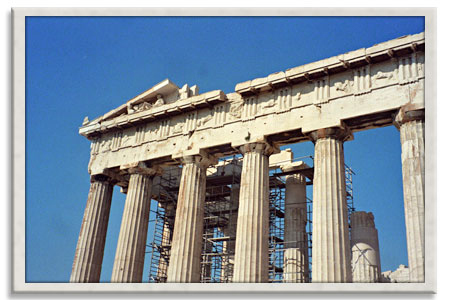
The Myth of Demeter and Persephone, Part I
My retelling based on the Homeric Hymn to Demeter, supplemented by Hesiod and Ovid
Of Lady Demeter, goddess of the golden grain, I sing, and her fair-ankled daughter Perspehone whom the ancients addressed as Kore, The Maiden, in whose laughter is the promise of spring.
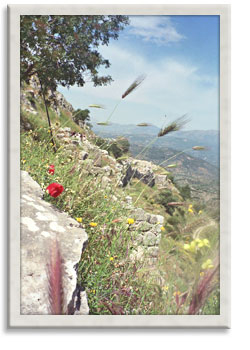
Now Kore was playing away from the protection of her mother, who is also the lady of the golden sword. In a meadow she found two flowers she had never seen before, narcissus and hyacinth, and gathered them to make a garland. Had she known their history, she might not have been so grasping! Did not Narcissus waste away staring at his reflection? Did not fair Hyacinth's blood stain the grass where he was struck by a stone discus cast from his lover's hand?
The lure taken, the trap was sprung. A chasm opened. Hades on a chariot drawn by dread horses erupted from the earth and bore her down. The jaws of the ground closed over Persephone's cry of Father. Futile, for Zeus her sire had secretly promised her as bride to lord Hades. No one knew heard save Hekate in the ear of her cave. No one saw save Helios the all-seeing Sun.
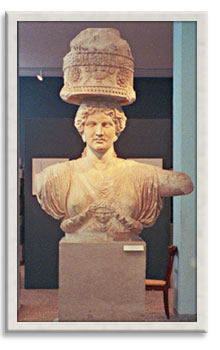
Demeter or Gaia from Eleusis.
Enraged, Demeter withdrew from Olympus and wandered mortal lands in the guise of an old woman in mourning.
She came to Eleusis, where she sat down by a well. The daughters of King Keleos and his wife Metaneira, drawing water, took a liking to the old woman and invited her home. So Demeter became nurse to the queen's infant son. She found solace in nursing the child, feeding him divine ambrosia and cradling him each night in the hearth. She was burning away his mortality. Then might his fate have been blessed, but Queen Metaneira stumbled upon them one night and snatched her boy from the live coals.
Demeter cast away her mask of old age and loomed over the queen, filling the hall with radiant light and lovely fragrance. "What fools are mortals! I would have made him a god, but you have undone all!"
Early Greek Sources for the Myths of Demeter and Persephone

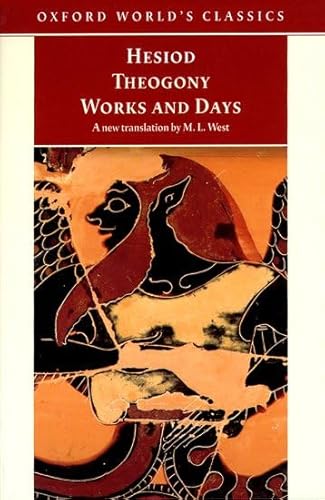

The Myth of Demeter and Persephone, Part II
Demeter demanded a temple be built at Eleusis and sacred rites established in her name. In later years the Eleusinian Mysteries promised its initiates a blessed afterlife and provided hope to millions.
Yet Demeter kept pining for her lost daughter, and shut herself in the temple when it was built. The earth gave vent to her grief. Young grain buried beneath the soil did not rise again, barley lay where it was scattered, and the world went hungry. Finally Zeus sent messengers to Demeter begging for her to relent. Iris the rainbow came down to her, and many another god and goddess with rich gifts. Yes, Zeus begged, most often known for his conquest of other goddesses.
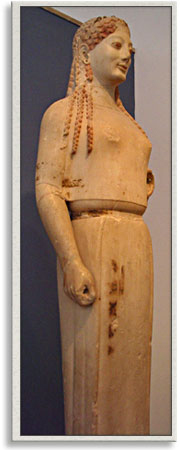
Mother and child rejoiced to be reunited, and Hekate with her torch stood by to grace them with light. Afterwards she became Persephone's attendant. But their joy was marred by sorrow. On learning that her daughter had taken food in Hades' dread domain, Demeter's heart was crushed, for now the realm below had claim to her.
On the counsel of Rhea, mother of Demeter, they arrived at a compromise (some tales make it the decree of Zeus). For two thirds of the year Persephone would dwell in the world above with her mother. Then spring would usher in new green and the world would blossom and grow fruitful. For one third she would reside with her husband beneath the earth. Soil would go cold, plants would die, and the earth would mourn along with lady Demeter.
Demeter reclaimed her throne in Olympus. She left instructions behind in Eleusis about the conduct of her new cult, maintained there faithfully for hundreds of years. Hear the words of a long lost poet from 2500 years ago:
Whoever on earth has seen these is blessed,
but he who has no part in the holy rites has
another lot as he wastes away in dank darkness.
(Homeric Hymn to Demeter translated by A.N. Athanassakis)
My Pilgrimage to Eleusis - Travel Diary, 3rd May 2005
The freeway follows the route of the old Sacred Way to Eleusis, fourteen miles west through refineries, quarries, and a run-down factory town surrounding the ancient sanctuary. It is so small to have held something to great, even with the added fountains (long gone), stone courtyard, walls and gates added by the Romans. (Useful Link: Map of Eleusis)
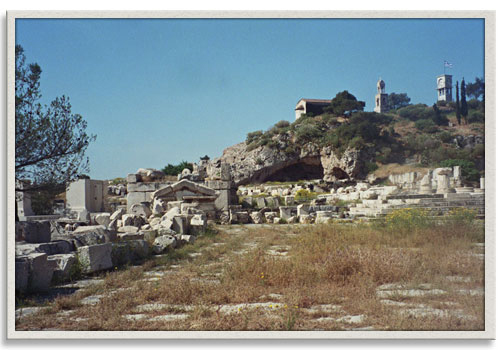
Outside the gates, the foundations of a temple of Artemis and Poseidon -- strange bedfellows! -- remind me of Chris Downing's observation that Greek cults did not always follow the familiar patterns of Greek myth. Poppies, verbena, and little yellow flowers sprout in profusion between cut stones and spill out into a meadow that Persephone no doubt appreciates.
Poppies adorn the stones themselves as well:
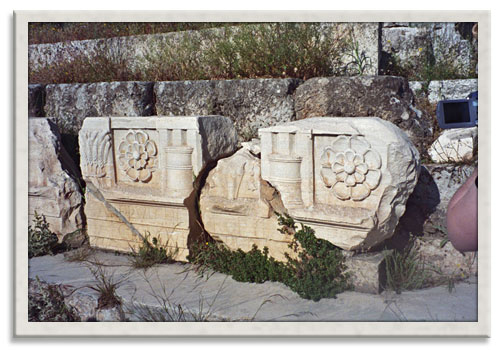
We pass the Well of the Maidens where Demeter once sat in disguise as the old woman Doso and was greeted kindly by the daughters of Metaneira. We process in through the massive Roman Propylon ("front gate") and follow a right-turning path that skirts the left flank of a rocky hill, at the foot of which is the grotto where an ancient drama of Persephone's return may have been staged. Before it lies the ruins of a small temple to Pluto/Hades. There I gather a few chamomile blossoms and stems of grain.
Continuing on the ancient pilgrims' path, I gaze furtively at carved stone blocks, trying to read inscriptions that would probably take me all day to decipher even were they intact. I am puzzled by low rising steps cut into the hill beside us -- what took place here?
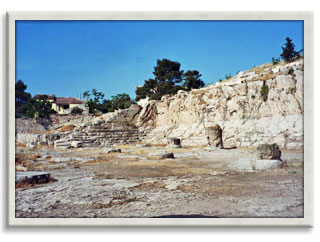
At last, coming around to the back of the hill, we reach the Telesterion, sacred heart of this sanctuary and the ancient Greek-speaking world. Once was a huge roofed building that held benches for 3,000 initiates. Half the hall is cut into bedrock; the rest is now open to the sky. Birds sing brightly and the sun beats down on the exposed courtyard where torches and revelation once shone forth in darkness from a central shrine inside the massive hall.
My Photos of Eleusis
Click thumbnail to view full-size







The Eleusis Museum
Travel Diary, 3rd May 2005
Beyond is a museum containing offerings of initiates from the Mycenaean through Roman periods, including the massive "Kistophoros Karyatid" (1st century BCE) pictured above. On her head is a mysterious cylindrical chest called a cista, which would have held some sort of sacred objects for the rite. Oddly, she also wears a Gorgonion -- the little head of Medusa that's normally Athena's emblem. Eleusis had been conquered by Athens in the Archaic period, and the Mysteries reflect Eleusis' partial but not total assimilation under Athenian control. Goddess shown emerging from the ground are traditionally mother/earth goddesses like Gaia or Demeter, but the depiction is somewhat unusual.
One wing of this small museum includes many Mycenaean offerings -- mostly little terracotta goddess figures. Another room is dominated by a gigantic "Proto-Attic" (archaic) amphora, the neck decorated with a scene of Odysseus and his men blinding the Cyclops, the belly painted with Perseus fleeing Medusa's sisters after beheading her. This vessel originally contained the bones of a child. Be sure to click the link above for an interesting video on the Odysseus Amphora.
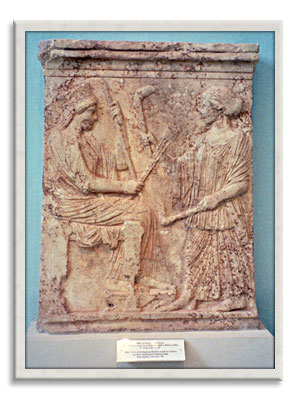
There are a few stately (or stuffy) Roman statues dedicated by initiates, as well as a particularly fine Antinoos. This young man was the lover of the Roman emperor Hadrian. Antinoos drowned in the Nile while they were touring Egypt. After his death, the emperor commissioned statues of him all over the empire, to the chagrin of his stodgy subjects. They didn't complain too much, however, since Hadrian was one of the most competent emperors in Roman history.
Finally, there are numerous reliefs depicting Demeter, Hekate, Persephone, Hades, and the local god-hero Triptolemos, to whom Demeter was supposed to have given the secret of cultivating grain. The local church of St. Dimitra used to have a huge marble relief of Demeter, Triptolemos and Persephone as its lintel; the original is now in the National Museum and a replica at Eleusis. At left, Demeter holding ears of grain welcomes Pesephone home -- although Hekate isn't present, the torches evoke her.
After exploring the museum, I return to the grotto for a while to enjoy the flowers and quiet stillness of the place. Eventually we reassemble in the square outside the gates and reembark, taking the ODOS PERSEPHONOU -- "Persephone's Way" -- back to the freeway and up into the mountains of Attica.
Photos of Art in the Eleusis Museum
Click thumbnail to view full-size








- For General Public: Eleusis - Pathways to Ancient Myth
Excellent, simple website on the history, myths, and mysteries of Eleusis, plus information on the museum. - For Scholars: Eleusis Inscriptions Project - Cornell University
Photographic database of inscriptions found at Eleusis. Good resource for scholars. - For General Public: The Curse of St. Dimitra
Our tour guide alluded to the local legend of St. Dimitra, a wise woman and healer whose daughter was abducted by -- not Hades, but Turks! Obviously a dim memory of the old myth lingered in this place. Here is a web page about a modern curse stemming - For General Public: Classical Backpacking Guide to Eleusis
No-frills but useful guide to Eleusis (and other ancient sites) includes a good description of what you'll see as well as how to get there. - Short Video - The Eleusis Amphora
[BUSTED LINK] Brilliant, fun video teaching the story of Odysseus and Polyphemus using the Eleusis Amphora. I'm going to keep checking this link in case they fix it, as it was well-done.
Lecture Notes: The Eleusinian Mysteries
My notes from Dr. Chris Downing's talk, 2nd May 2005
Dr. Chris Downing is a professor at Pacifica Graduate Institute who takes a small group of alumni and a few current students to Greece. Each evening, she would give a lecture on the site we were about to visit. I've left out most of my notes from those lectures, but I can't resist quoting a few excerpts from her Eleusis lecture.
The ritual of Eleusis is dedicated to both Demeter and Persephone. According to myth, Demeter is the first initiate.
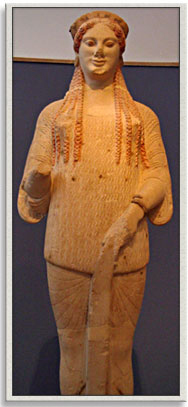
Ancient sources say the ritual frees initiates from fear of death. Unlike most other religious festivals and cults of the period, it is open to men and women, slave and free.
It's the only non-obligatory ritual besides those to the healer-god Asclepios (undergone by the sick and wounded). That means it's voluntary, rather than one of the local holidays or festivals everyone attended.
One has to be initiated in spring, then one makes a pilgrimage to Eleusis repeating parts of the myth.
Initiates were bound to secrecy, and no one gave away the secret of what happened during the climax during the rites' 2000 years of operation. It's unusual for a Greek ritual in that it takes place a) underground and b) in the dark [but that seems to fit with the Underworld/secrecy theme].
In the late 1960s, some scholars [Joseph Campbell for one] guessed the kykeon, the drink quaffed during the ceremony, may have been hallucinatory ergot. Chris dismisses the theory -- between the drums, incense, and weariness from the long hike there was plenty enough to send one into an altered state without need for drugs!
Interesting point: during the Mysteries, men take women's names [and this is a VERY patriarchal culture]. Perhaps to enter a female [or Demeter's] perspective?
Aristotle says that at an experiential level, the feeling of death has changed for initiates. Perhaps we feel ourselves part of the chain of life? It's very different [says Chris] from Christianity's perpetuation of the individual.
The Journey Continues....
Next, join me as I visit Delphi and the world-famous Oracle of Apollo in Ancient Greece Odyssey: The Temple of Apollo at Delphi!
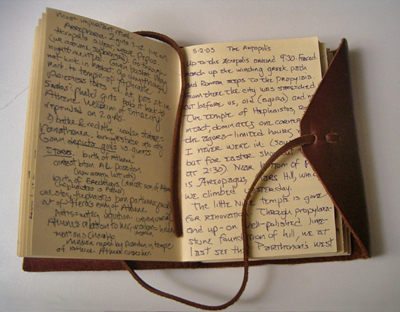
© 2007 Ellen Brundige

